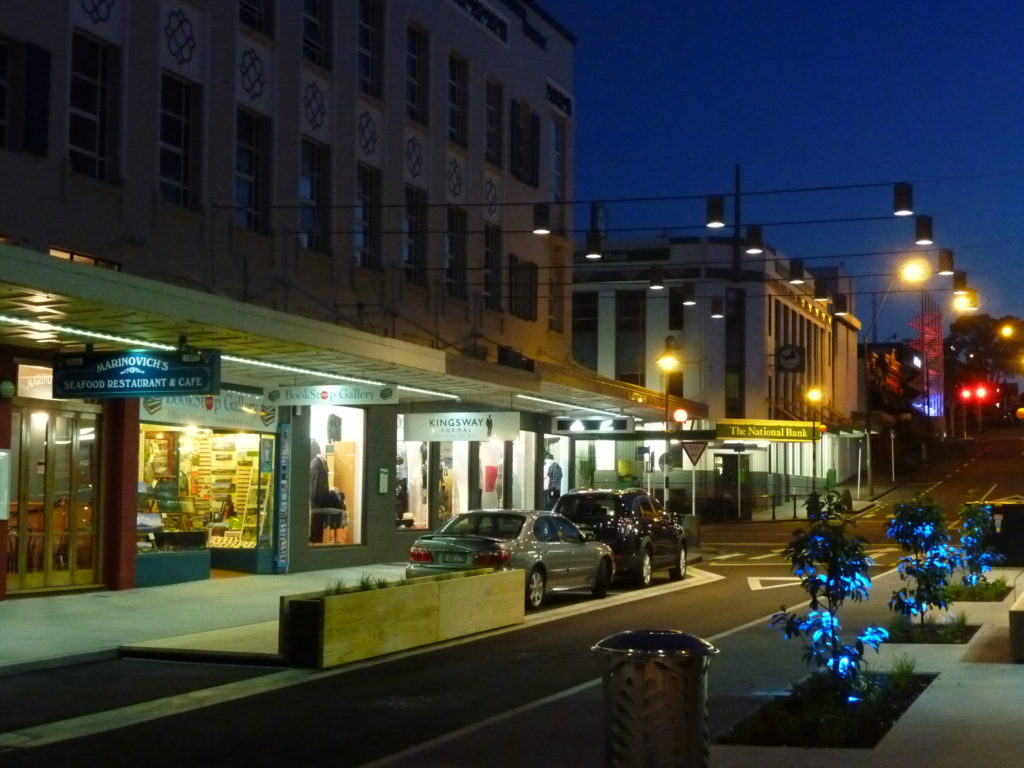Will our cities really change for the better?
We are told that the pace of change is rapid and relenting, yet so many things just don’t seem to change at all.
The way I see it, the pace of change can be deceptively slow. In an age where technology changes faster than a politician’s promise, we expect ideas and design to also charge along with us barely able to keep up. We are supposedly cast into a swollen river of change, our heads barely above water, as we are swept to happiness.
Yet, kids in school today still spend considerable time blindly copying from the blackboard (ok so now it’s a white board), you still buy potatoes in a sack, and architects still refuse to design rooms, preferring pavilions – suggesting perhaps that architects have an enduring love affair with tennis, as pavilions bounce from their drawing boards like buttocks at Wimbledon.
My point is, that in life things are surprisingly slow to change. We hear so much about the fast pace of change that we are inclined to believe it. Yes, we have phones smarter than a monkey with a PhD, and televisions are now so big we have to watch from our neighbours house for fear of frying our tiny brains.
But, what about everything else? For example, shoe laces. To this very day, I still have to tie my shoes. Velcro just hasn’t lived up to the hype – consigned to a few jacket cuffs and the dalliances of the Velcro gloved Sheep Shagger Mounty McDougal from Manawatu.
And what of the humble kitchen knife? We still have no credible substitute for standing for hours at the kitchen sink chopping pieces off the ends of our fingers. Kitchen whizz my arse – the only whizz in my kitchen is Mrs Alexander who in the blink of an eye can turn a courgette into a zucchini.
And clothes. Where are the skin tight body suits we were promised in Star Trek? Attend any business meeting today and balding men still turn up in blue shirts and neck ties fastened so tightly they look like they have just sat on a pineapple.
In 1533 Catherine ‘great legs’ De Midici wore high heels at her wedding, starting a trend that continues to this day, despite the absurdity of wobbling about on tippy toe. Proof I guess that ‘girls can do anything’. Furthermore, despite this great technological age, when it comes to shoes, there still appears to be no place for synthetics – just ask an alligator.
The thing is, this slow moving pace also applies to urban design. It’s surprising what hasn’t changed. Buses and trains are still crap to ride on. They run late, you are stuck under a fat man’s armpit, and the bloody things stop all the time. Walking to work is a step too far and we live in a country where it rains so much that we have to put verandahs over our shop fronts. Did you know that New Plymouth gets two and half times as much rain as London? Biking is of course completely out of the question as your life expectancy is shorter than a man who tells his mother-in-law to stop interfering.
So what do we do? We take the car. We have always taken the car (yes before the war there were no cars, but there were also no jobs, so no rush). We are told that this trend is changing, but is it? In Britain, the number of cars has increased every year since World War II. And there are now 7% fewer buses in Britain than in 2008.
It’s a similar trend here in the land of the long smokey cloud. In 2013, 2.4 million cars roamed our streets, and only 5% of trips in Auckland are made on public transport. While the Global Financial Crisis made us think twice about replacing the rusting Honda, the slowing in car registrations was short lived. Last year 181,000 cars were registered, up 16% on the year before. Lets just face it, changing how we use our cars is about as likely as an Australian vowing celibacy.
And what of the promise of increased leisure time? We are still ‘working for the man’ 6 days a week, for far less money than we actually need. We were told that the way we worked would change forever, the great challenge being what to do with our leisure time. Well, the only leisure most workers get is a cup of weak tea and a furtive fortnightly shag when the kids are sent out for fish and chips.
So where is all this travel and lifestyle change we hear so much about?
Well apparently it’s coming. Auckland is formulating a cunning plan. So cunning in fact, that all other cities will want to copy it. What Auckland is going to do is build lots of teeny weeny houses and connect them with a miniature train set. Fat poor people will then be given the houses who will have to get thin to fit into them. In turn, more of them will be able to squash onto the trains. Diabetes problem solved, housing shortage solved, oil shortage solved.
You have to admit, it’s a brilliant plan. A multitude of problems solved and rich people get to keep their huge houses, big cars and ever expanding stomachs.
The poverty probably won’t get solved, but with this plan at least all the poor thin people will be living together so you won’t notice them if you stick to your side to town.
Of course what will actually happen is that just like a teenager’s bedroom, our cities will remain a smelly mess and despite a lot of yelling, and confiscating of possessions, things will continue as is. Our cities, will remain a playground for the rich and a workhouse for the poor. Some things just don’t ever change.
Richard Alexander Bain
Self confessed futurist

